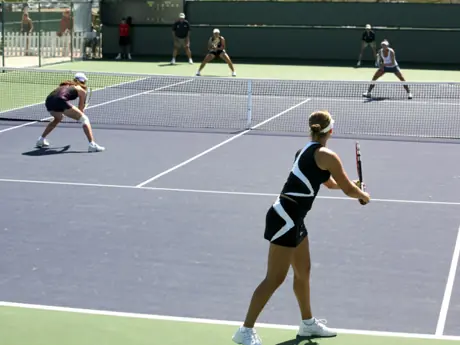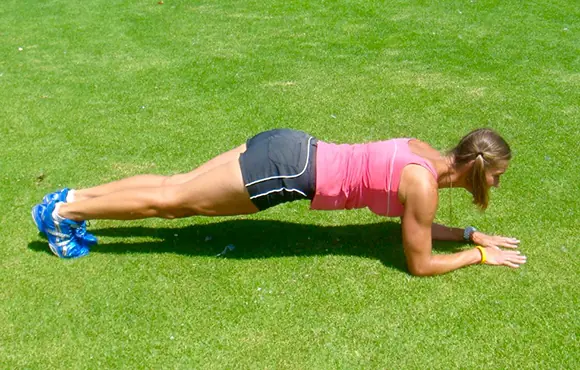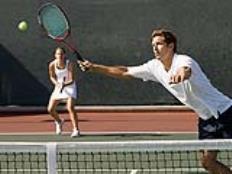
The most successful net-rushers at any level can sense when one of their shots will leave an opponent vulnerable. The first step in developing an effective approach sequence lies in anticipating when to attack, trusting one's instincts and taking off to the net.
Readers who have intuitive or perceiving personality types are nodding their heads "Yup, got that already." Those readers with sensate or judging personality are not so sure. They're analyzing: "I understand, but I haven't calculated the movement requirements, wind and sun variables, or the opponent's response percentages."
In other words, their analysis leads to paralysis, and they struggle to instinctively recognize a short-ball opportunity.
Applying informed guesswork comes from the art of paying attention to small, seemingly meaningless details. Successful net-rushers are mindful in their attacks. They base their approaches on information gathered from past experiences and informational clues gathered through broad vision.
To accelerate the process of developing anticipatory skills, players should practice spotting these seven broad vision clues:
1. The court zone in which the ball is going to land. This can often dictate an opponent's options and probable shot responses.
2. Court positioning. Offensive, neutral and defensive shot selections are greatly influenced by an opponent's court position. An inverse relationship generally exists between a player's location on the court and her level of aggression. The greater the distance away from the net, the less aggressive a player tends to be.
3. Body language. Is the opponent balanced or unbalanced? Is he or she comfortably set or jammed?
- 1
- of
- 2









Discuss This Article